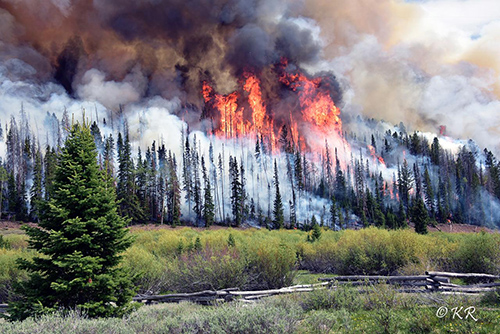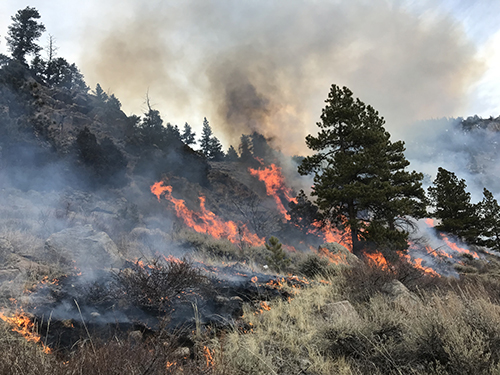
NOAA and NASA are studying the chemistry and composition of smoke from wildfire and agricultural burning to improve weather, air quality, and climate forecasts, and to provide better information to first responders, public health and land management officials.
Fire is an important natural event in many ecosystems, but it also poses costly risks to human health and property. These risks have increased in recent decades due in part to shifts in the health of wildland ecosystems due to climate change and forest management practices. These shifts have occurred during an era of widespread population growth in the wildland-urban interface, with consequent increases in the exposure of populations to direct and indirect impacts of fire, and increases in the frequency of human-caused ignitions. In recent years, North America has experienced a number of extreme wildfire seasons and extraordinary wildfire events. The total area burned by wildfires in the United States in a single year has exceeded 8 million acres only eight times since 1960 - all have occurred since 2004.
In addition to direct threats to life and property, wildland fires produce lots of smoke. Smoke is an incredibly complex and constantly evolving mixture of gases, solid and liquid particles. Smoke has detrimental air-quality related health impacts, including aggravated asthma, chronic bronchitis, decreased lung function, congestive heart failure, and premature death. Small particles in wildfire smoke may result in exposures lasting hours to weeks.
FIREX-AQ, formally called Fire Influence on Regional to Global Environments and Air Quality, is a joint venture led by NOAA and NASA that will investigate the chemistry and transport of smoke from both wildfires and prescribed burns during a large-scale field campaign in 2019.
